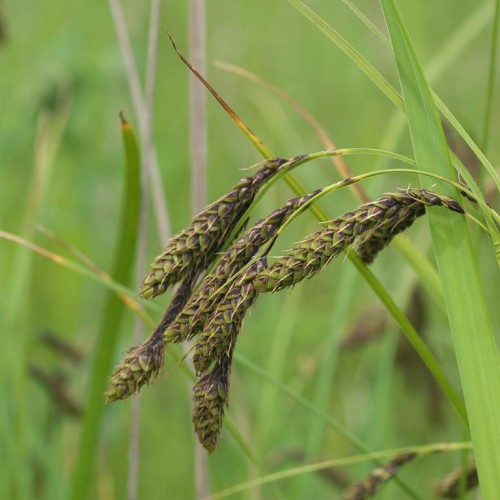
Hybrid Sedge
Carex aquatilis var. dives x var. kelloggii
Watering:
Frequent
Hardiness Zone:
Flowers:
Flowers
Sun:
full sun,part shade
Fruits:
Fruits Ready In
Leaf:
Yes
Growth Rate:
Low
Drought Tolerant:
Yes
Salt Tolerant:
Yes
Care Level:
Medium
watering
Sedge (Carex aquatilis var. aquatilis x) should be watered in a regular weekly schedule in order to stay healthy and thriving. The plant should be watered deeply, at least once a week. If the soil is excessively dry, twice a week watering may be necessary. When you water, make sure to wet the entire root zone, which is usually the top 6 to 12 inches of the soil. Watering early in the morning is best, so the foliage has time to dry before evening; if the leaves of the plant remain wet for too long, they could develop fungal diseases. During the summer months, Sedge may need additional water, especially if temperatures are high and the soil is dry.
sunlight
Carex aquatilis var. aquatilis x requires moderate amounts of sunlight, ideally between 4 and 6 hours of direct or indirect sunlight per day. This plant species should preferably be placed in an area that receives morning sunlight, followed by filtered light for the remaining hours of the day. It also does well in light shade but is not able to tolerate extended periods of prolonged shade.
pruning
Sedge (Carex aquatilis var. aquatilis x) should be pruned annually, in late winter or early spring. Pruning should be done to keep the sedge looking tidy, to help shape the form of the plant, and to control its size. Depending on the desired size of the sedge, the amount of pruning can vary from only removing a few dead or diseased stems, to lightly trimming back the entire plant to the desired size. It is important to not over-prune; take care not to remove too much of the plant at any 1 time, as this could damage or kill the sedge. When pruning, only remove stems that are dead, diseased, or significantly overgrown.
